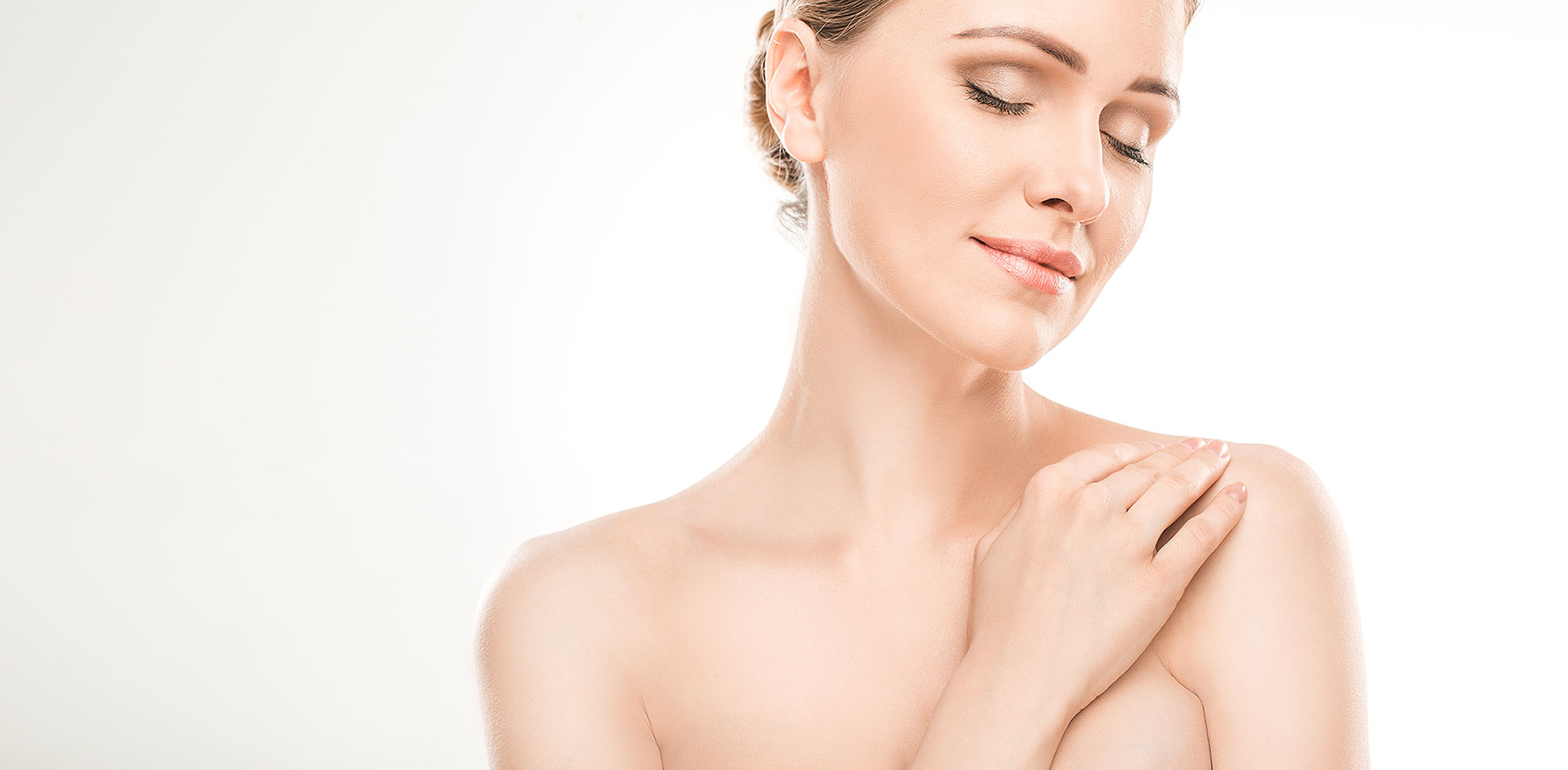
27 September The Effects of Stress and Hormonal Decline on the Skin
In our clinics, we are seeing an increasing number of patients who are experiencing stress and anxiety. Whether stress is work related, financial, or personal, it can have a huge impact on our health as a whole. Last year, a study by the Mental Health Foundation revealed that 74% of us felt so stressed we were overwhelmed or unable to cope. Women seem to be more susceptible, with 81% saying they felt this way (compared with 67% of men).
Stress is bad for our health. It has been found to affect the immune system and contribute to heart disease, insomnia, and poor gut health. There is another, possibly lesser-known effect – stress is also a contributory factor to ageing skin, affecting its health and appearance.
The adrenal glands produce excessive amounts of the stress hormone cortisol when we experience stress. Cortisol surges the body and can bring about weight gain and sleep disturbances. A low-level drip feed of daily cortisol is pervasive. Over time, chronic, low-grade stress builds in our bodies and can lead to adrenal fatigue. This can result in exhaustion, brain fog, low mood, and an inability to be able to cope.
What happens to the skin when we are stressed
Keratinocytes in the epidermis (the outer cell layers of skin) produce cortisol when we feel stressed. Cortisol is an inflammatory hormone and so, depending on your skin type, it can make your skin red, dry, wrinkled, tired-looking, reactive and sensitive, oily and acne-prone, or cause under-eye dark circles.
Large quantities of cortisol cause elevated sugar levels in the bloodstream which results in by-products called advanced glycation end products (AGEs), which cause the destruction of both collagen and elastin. This results in loss of elasticity, while inflammation encourages fine lines and wrinkles. It also results in thin, crêpey skin around the eyes because increased cortisol also breaks down the thin tissues surrounding the eye area, making the tiny blood vessels around them more visible.
The first sign is a darkening of the skin, like dark circles under the eyes. The next is dryness and redness. Stressed skin is also more prone to blemishes. Extra cortisol makes our skin glands produce more oil, and oily skin is more prone to acne. So, if you’re breaking out more than usual, it could be a sign of too much stress in your system. Stress also slows down healing, so breakouts and spots take longer to clear. And anxiety has a direct effect on more serious skin conditions, such as eczema and psoriasis.
Unfortunately, stress isn’t the only factor ageing our skin
Decline in hormones, especially around the menopause, has a great impact on our skin health. A major culprit for the skin thinning, wrinkling, and dryness associated with ageing is the decline in hormones such as oestrogen and progesterone in women, and testosterone in men.
Therefore, it’s no surprise that the decline in hormone levels as people age parallels the decline in skin quality frequently associated with ageing.
Oestrogen
The skin is one of the main targets of oestrogen action, and facial skin expresses much higher concentrations of oestrogen receptors than other areas. This means that the effects of falling oestrogen levels as women reach the menopause are far more obvious on the skin of the face than on the skin covering other parts of the body.
Reduced oestrogen levels affect skin health in a number of ways: these include wrinkling, dryness, thinning, reduced collagen, slower wound healing, and loss of elasticity.
Interestingly, overweight patients often don’t show this deterioration in skin health to the same extent as normal weight people; this is because they maintain higher oestrogen levels as a result of increased aromatase activity in fat and skin tissue. Aromatase is an enzyme that converts testosterone into oestradiol and androstenedione into estrone, and it is present in large quantities in fatty tissue. Estrone and oestradiol are therefore found in larger amounts in obese individuals than in normal weight people of the same age.
Oestradiol is the most potent oestrogen, and its main source is the ovaries in reproductive women. Estrone, with weaker estrogenic effects, becomes the more prominent oestrogen produced in postmenopausal women as their ovaries stop oestradiol production.
Studies of oestrogen replacement therapy have shown some improvement in those skin properties affected by low oestrogen levels, e.g. increased collagen content, skin thickness, and skin elasticity. Hormone replacement not only increases skin surface lipids but also actively enhances the barrier function, effectively preventing dryness. Oestrogen also plays a role in maintaining skin glycosaminoglycan content, which retains moisture.
Hormonal changes in men
Low testosterone in men is associated with thinning skin. This is believed to occur due to a reduced availability of testosterone for local conversion into oestrogen, which is facilitated by the presence of aromatase in the skin. Testosterone replacement has been found to increase skin thickness.
Progesterone
Progestone is known for its roles in both cosmetic skin creams and hormone replacement therapy. It has demonstrated its remarkable ability to enhance skin thickness and elasticity.
Low progesterone levels are thought to increase the impact of androgens on sebaceous glands and body and head hair. This is because progesterone reduces 5-alpha reductase activity, which converts testosterone to its active metabolite dihydrotestosterone (DHT). DHT is the culprit for androgenic side effects in women such as unwanted facial hair growth, which tends to appear with ageing or in androgen excess conditions such as PCOS.
In both men and women, excess DHT in the skin contributes to acne, and in the skin of the scalp it is responsible for “male pattern baldness.” High levels of hormones can contribute to skin discoloration, e.g. the brown patches (“chloasma”) associated with pregnancy or with hormone replacement therapy.
Find out more with a full medical consultation
Dr Manning and Dr Woodward at River Aesthetics are able to carry out full medical consultations to address your needs. A comprehensive assessment, in conjunction with pertinent blood or saliva tests, can help identify hormonal deficiencies. These with enable the Doctors to create a personalised treatment plan for you.
We will schedule a follow-up consultation to discuss your results, treatment plan, and the required prescriptions.
Bioidentical Hormone Replacement Therapy (BHRT) seeks to replenish diminished hormones with plant-derived counterparts. Through a selection of gels, capsules, or lozenges, River Aesthetics offer the means to restore testosterone, oestrogen, progesterone, DHEA, and thyroid hormones.
To determine if Bioidentical Hormone Therapy is a suitable option for you, schedule a consultation with River Aesthetics today.
Speak to a member of our team about your concerns on 01202 024060 or book your consultation online.
River Aesthetics run industry-leading clinics in London, Hampshire and Dorset providing an award-winning range of treatments including: Thread lifts, Coolsculpting, Dermal fillers and Anti-wrinkle treatments. With a wealth of experience and true passion for aesthetic medicine, you’re in excellent hands with River Aesthetics.

